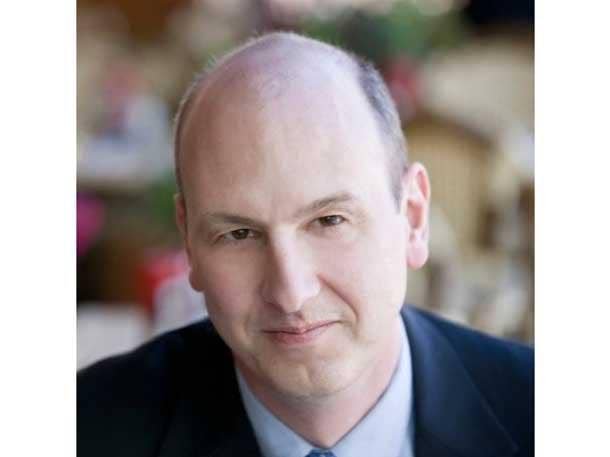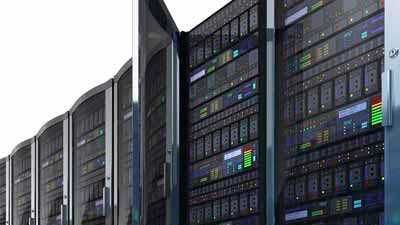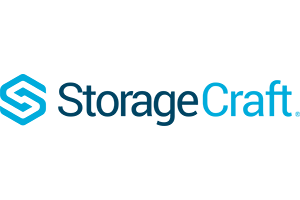President Douglas Brockett On Taking StorageCraft Boldly Into The Midmarket
Douglas Brockett, who joined StorageCraft with its huge acquisition of Exablox, said his company still has huge MSP and SMB plays, but that growing partners are pulling it and its technology into the midrange and beyond.

Rearchitecting StorageCraft For A New World Order In Data Management
Extra spending money combined with long-term strategic thinking can go a long way in the data protection business, as StorageCraft shows. The Draper, Utah-based developer of data protection technology in early 2016 was acquired by a private equity firm for $187 million, and the following year in turn acquired primary storage vendor Exablox.
For a small provider of data protection software and appliances to SMB-focused solution providers, those two events created an opportunity to not only grow its business but grow the kind of businesses it targets. Instead of an SMB focus, StorageCraft has turned into a major force in the MSP market, and as those smaller partners grow it is being pulled right along into the midrange and above. And the Exablox acquisition gave it a primary storage offering and a shift to a new architecture, OneXafe, that converges primary, backup, and disaster recovery into a single platform.
Leading the charge along with StorageCraft CEO Matt Medeiros is Douglas Brockett, the former CEO of Exablox who now serves as StorageCraft's president. Brockett recently sat down with CRN to talk about the evolution of StorageCraft from an SMB data protection developer to converged storage technology powerhouse for MSPs and midrange channel partners, as well as what sets it apart from its rivals.
An edited excerpt of the conversation follows.

How did the StorageCraft channel change after the 2017 acquisition of Exablox?
We are 100 percent built around this idea that we're going to enable the managed service provider. But oftentimes that managed service provider is becoming part of a larger product-centric business or even a larger MSP business. And so their needs are scaling up, and they can no longer focus exclusively on that small, small business end user. They need solutions that actually scale up and scale down.
And so we've gotta have a larger product portfolio that addresses these business models. And, frankly, each company on its own was going to have to put a bunch of R&D into doing that. Together, I think we're reacting to changes that are happening in the channel. And perhaps we've anticipated them a little bit. I'd like to say we're good. We're more likely lucky. But at least in retrospect, these themes seem predictable: that you'd see consolidation, you'd see the need to have broader solution sets. And clearly, mergers are the fastest ways to get those technologies done.

This seems in sync with CRN research that shows a lot of solution providers are offering managed services even though they don't call themselves MSPs.
Well, I'm glad that we see the same thing. I think it's a pretty undeniable trend when we get out there. I think it's a dynamic that's reflective of our solution partners' end users that say, 'Hey, I need help in different areas, and I need different levels of help in different areas. But what I want to have is a relationship with one solution provider. And for some things that I need at my company, I need you to be transactional and provide product. And for some things, I need implementation and consulting. And for some things, I just want you to go run it. And don't make me turn to a different person or to a different channel partner just because I have a different type of engagement model necessary for this segment of my business or for this type of technology.'

Is StorageCraft changing its approach to the channel, going after larger data center channel partners than it did in the past?
One of the things that is super important to us is that we are very much a dance-with-the-ones-that-brought-you company. We have a huge investment in those MSPs that are able to serve the SMB, and we continue to invest really heavily in that, and you'll see some new products coming out from us that are all about that. Yet at the same time, a lot of the same individuals that we built relationships with are now the guys getting acquired up into these nationals. And so, they [tell us], 'Now I'm part of a $100 million company, a $200 million company, a $500 million company, how do I keep my relationship with you, because I've got so many other things that I need.'

How do you stay relevant to those solution providers as they grow?
We've got to find ways to service them from an account management perspective, from a channel partner program perspective, from a technology perspective. And so they stretch us. On one hand, we need to keep nurturing and loving the guys that have been the feeder for this mechanism. But we're also needing to find ways to say, 'Yeah, we can also deal with you as you keep growing.' We've always been about growing our solution partners. Sometimes, for them, the next step in their growth means being acquired, or acquiring, or merging. And then you're dealing with somebody much, much bigger. …
Between what we're doing on the technology side, this trend of [mergers and acquisitions], bringing in some enterprise-grade credibility from Exablox, we're able to tell channel partners, 'You never have to graduate from StorageCraft.' I think that's an important message because these guys built their businesses on us.

You said StorageCraft is looking to move up into larger accounts. How does the company plan to actually do so? Will it work with existing partners or recruit new?
There's two things. One of the things I talked about is the fact that we already have partners in our base that are getting acquired by larger and larger players. And so, like it or not, we are getting in the mode where the people we dealt with all along are now all of a sudden part of much larger VARs, some of who are more product-centric, some of them are more midmarket-centric. The question comes back to us, 'What do you have for me? How do you help me deal with my larger midmarket customers?' So to a certain extent, for us its a channel dynamic.
What's the other part?
As they look to grow their business, our traditional MSP partners start to say they've grown pretty quickly to tens to hundreds to thousands of end users, depending on their marketing competence. They now have two paths. One is to either merge and grow geographically, or to start making their reach go a little bit higher into the food chain and start calling on larger customers than they might have called on before. …
I don't want to see anybody graduate from StorageCraft. If we don't have solutions for them to offer into that midmarket, then maybe they would graduate from StorageCraft. ... That's why we've enhanced our offerings so that they can address the midmarket customers.

How about programs to reach those larger partners?
Once they're there, we want to help them market to those guys. We've got a bunch of channel programs to encourage them to go after those types of customers. We're doing a $100,000 per partner promotional program for bringing us new accounts and penetrating them with our OneXafe solution. We think that was a big attention getter for us. But it also said to channel partners who are expanding their business that we're here, we're a vendor that is making waves and making motion in this space. Work with us on these types of prospects and accounts.

How does StorageCraft's price-performance compare to that of competitors like Rubrik, Cohesity, Commvault, and so on?
We're all about saying, OK, how can we get people into a solution at a price point that is within the business logic of the customer that they're selling to. And for us, that meant finding ways to scale down solutions to the point where they can start buying into them for a few hundred dollars to a few thousand dollars to $10,000, $20,000, and keep growing over time to reach whatever scale and capacity they need but have each building block reasonably priced. Our software solutions will start under $1,000. Our appliance-based solutions start at about $12,000. All-flash solutions for us start at about $25,000. And that's something that the Rubriks and the Cohesitys of the world can't really touch.
Why is that?
Not that they're bad companies. Not that they're not smart. They've got the best engineering money can buy because, frankly, they're spending money like water. It's a strategic choice about how you go to market, which is that, if I'm going to choose to get VC funding from Sequoia Capital and Lightspeed Ventures, what do they want to see? They want to see the biggest roster of Fortune 500 customers they can, as fast as they can. And in order to do that, you buy a whole bunch of shiny-shoed, steak-dinner-buying, golf-playing, direct sales reps who bring down big, fat W-2s. And they have to be closing $400,000, $500,000 deals to make their numbers. And you can't do that if you're going to be catering to this midmarket capability where your transaction sizes are 1 percent of that. In order to do that, you've got to make channel partners successful. You've got to work with them to reach a broad market.

What are some things we can look forward to hearing from StorageCraft in terms of new products for the rest of 2019?
I am a firm believer that you don't do product sprints. You do product marathons. You always have new things coming out pretty much every quarter that need to be interesting. It's been two years since I joined StorageCraft, and we're starting to see those things starting roll out the pipeline. … In Q3, we'll be announcing a new product category for us that we've not been in before. And in fourth quarter, we have on the roadmap some significant enhancements to what we're doing on the cloud front. That's a little fuzzier, but I think we'll be making some significant announcements around that in Q4.

Where would you like to see your partners investing now for future success?
What I hear from a lot of channel partners is the thing they are worried about most is their team and their staffing. I think we're all fighting, in the U.S., the labor shortage right now. Finding ways to make your existing team more productive is probably the only way out of the rat race of trying to find more techs. I hear from channel partners all the time who say, 'My business is limited by the fact that I can't afford to hire more techs.' Or, 'I don't know how to retain the techs that I have.' Our view is, what could you do for your business today that could release some of the tension you have there by making your techs more productive? Obviously, we think we have a solution that helps with that by essentially saying, remove a lot of labor, remove a lot of uncertainty, increase your productivity. … There [also] are RMM functionalities that a lot of these guys can be doing better today. There's automation around service desks they could be doing a lot better with today. All of the things that they've gotta do to get productive and get better use of their resources.
Where do you see partners making mistakes?
A lot of them today are burning capital in building data centers. That's probably not a wise investment. They could look at other ways to use that cash resource to drive more productivity in their organization. If instead of spending $100,000 in my data center this month, if I can spend $100,000 automating some process with software, that's probably a better yield.

Is your channel organization headcount growing?
We have done a lot. In fact, we just did a new investment in our channel team. We have expanded our inside team in the U.S. We're finding that our ability to touch partners, particularly new partners, has been not as good as we want it to be. We just haven't had the outbound calling capacity. We find that if we aren't calling partners on a regular basis, if we aren't holding those conversations with them, our ability to discover what we need to do and learn from them isn't anywhere near where it should be. So we just added headcount in our Draper, Utah organization. We have also reshuffled some resources so that net-net, we've gone up by almost a factor of two in terms of our inside channel team being able to reach out and proactively converse with partners.
Are you in partner recruitment mode at all?
Of course. Always.
What is your ideal channel partner?
I wouldn't want to try to put them into one box. We love SMB channel partners because it's still an underserved market, and there's such a gap between what end-users need and what they have in that space. The business risks are huge. And they're still climbing that educational curve. …
At the same time, a lot of the guys who used to be our SMB MSPs are now working for larger product-centric companies. We designed our program to make it attractive to those guys. And so, we have multiple sales motions within our sales teams to go try to recruit those partners that may have very, very different priorities. But we are in recruitment mode on both.